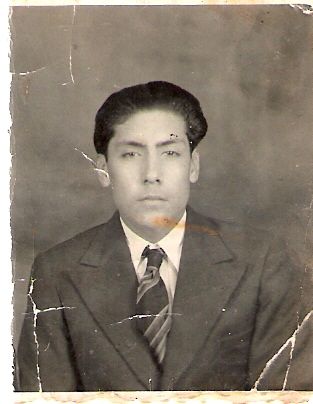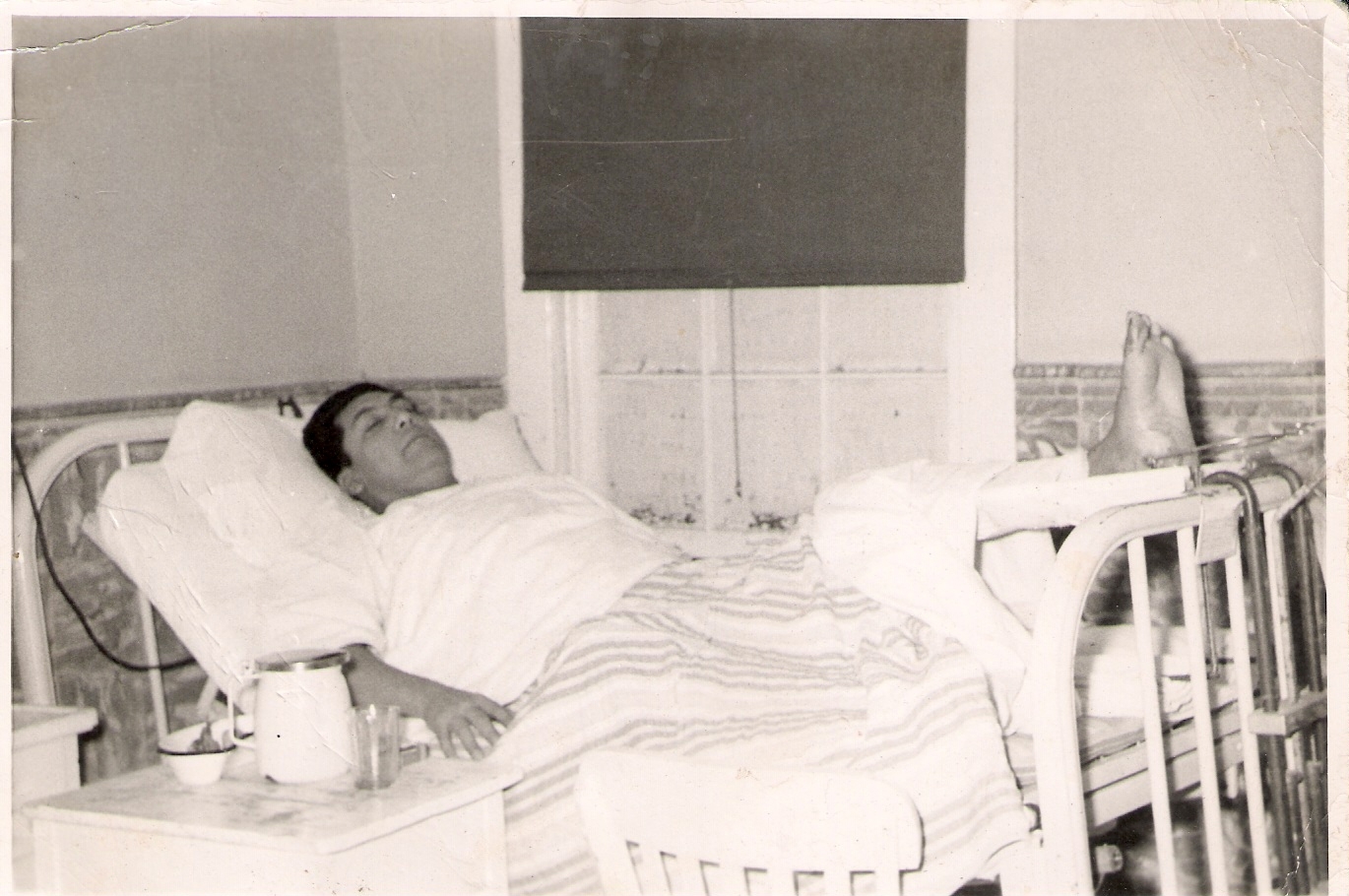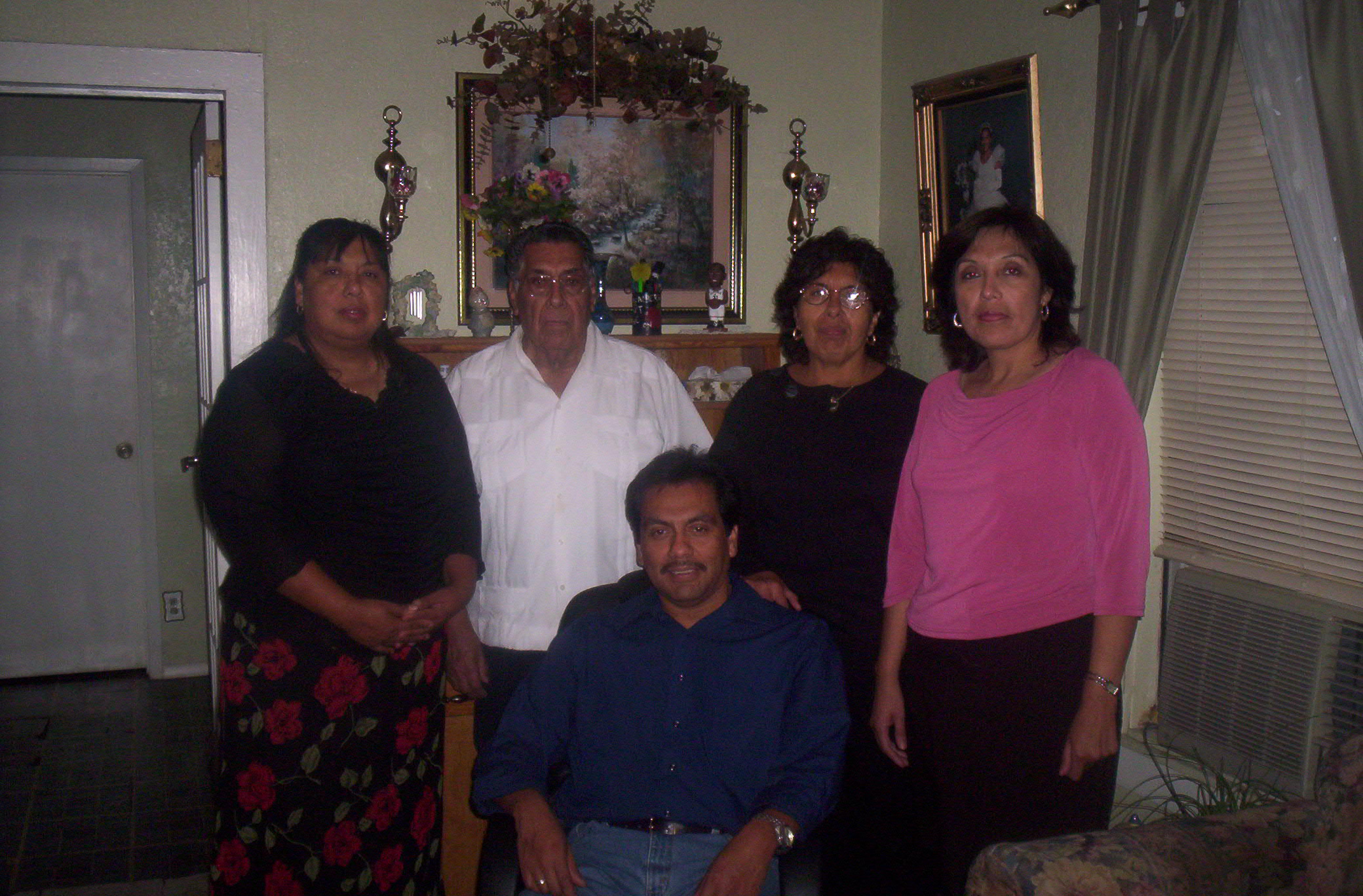Carlos Cardona De La Rosa


(This interview was conducted in Spanish and was transcribed and traduced to the best of my ability.)
Describe a typical day for you as a child in Mexico.
I played hide-n-seek and well pretty much anything that the kids played.
Did you attend school?
Yes
Up to what year did you attend?
I attended up to the sixth grade, I donít remember what the name of the school was it was in Agujita.
Why only till the sixth grade?
school was free but i did not have enough money for the school supplies like for the pencil,
paper or journals, so i just decided to get out.
At what age did you start working?
Oh! When I started working? I started working in the year 1938 I was about 17 or 18. You know where? In a bakery.
I use to know how to make all breads, but now, I donít know how to make anything. Nothing. I just know what you put in the
microwave.
I understand that you worked in the mines, what exactly did you do?
I work in the minas de Agujita,Mexico and I worked underground. I would put up the wood to hold up the ceilings, kind of like the borders around the doors.
I did that for four years, and then I started knocking down the coal. I did that for three years. Then I went to the coal
cutting machines. I worked with those machines for ten years. I worked til 1950 then I stopped working for a year. I didnít
work. Then in 1951 I went back top the mines. Theres where I broke my leg there was an explosion in 1940. I was still kind of
new but I was scared to go down. I had all my equipment and we had a lamp that hung from our waist. There were three of us.
We had to go down a hole that fit thirty men. I didnít want to I was scared I would ask why, why do I have to? No! When we
would go down we had to go down we had to two chains, you had to hold on real tight. When we would go down it felt ugly I
felt like I wanted to cry. In the first explosion ten died, they all burned to death. But the fire ended there, there was
this thing that would put out the fire, but what we got in the area I was in was smoke, smoke everywhere. The man that I was
with knew everything about the mines. So we heard the explosions, luckily it didnít go to where I was at just the smoke.
The man covered me and told me not to pick up my head. He was in front of me and another man behind me. He knew what he was
doing, the whole time I was crying because I was real scared. We finally went up and went outside. He led us outside because
it could have exploded again. In 1952 when I barely went back to work after taking that year, there was another explosion but
it was in the top of the mines. I already knew what to do though. I knew one of the men that died. The next one was in
1969 and on the spot where I was going to work. You know, I didnít go in that day; I really didnít feel like it. I think it was God
that was telling me not to go. I guess it was not my time. But I didnít go and it was in my area. That was the last one
I heard about it later, cause I went out of town. The ones that were working all died.
Why did you leave the mines for a year?
I stopped working because there were alot of extra people. Do you want me to tell you everything? Even the accident?
Well in 1955 I broke my leg. A rock fell from above me and landed on my leg. The doctor drove a nail through my heal and
put over fifteen pounds on my leg. The doctor asked me do you want one leg shorter then the other? I said no, and the doctor
told me to deal with it then. Later they started taking off two pounds and it felt better. But when the nurse would go fix
my bed, they would bend my leg and it felt so good. That all happened in 1955. They put two plates in my leg. Then I went
back to work at the same place where I broke my leg, my mom didnít want me to go, I went back to the bottom where I broke
my leg. I lasted there ten years. I got out of their in 1967. I was in that bed for 90 days without even moving. When they
took the weight off to change I felt so relieved. I begged them at times to take off the weight and they would tell me no
cause the doctor would get mad. Once I yelled and told them to take them off and they did, and luckily one leg is not shorter
then the other. 90 days like that. Can you imagine every three hours they injected me here, there, everywhere all so it
would not get infected. I would wake up at nights and cry sometimes.

Why did you return to the mines after you broke your leg?
Well we went on strike and they told us not to return so we didnít and we lost our jobs. But after a year they called me
back. The ones that had a bad record were not allowed to go back. In 1967 thatís when I stopped. Since I worked there for
twenty-five years I was due for termination. I later started working in Mexico City
(El Distrito Federal) for sixteen years and thatís when I was arranged to
come over here.
Why did you decide to come to the United States?
Because the son of my wife (Lala) at that time came over here at the age of 16 or 17. He lived over here and he got
married over here, thatís how he fixed his papers, he married an American. He asked me and his mom to come to the United
States and he would fix our papers. I came over here on the 20th of December of 1973. Then thatís when I asked all my kids
and fixed their papers so they can also live over here.
Did you have any problem coming over here?
No, no we already had our residence, we filled out the papers and well we are all here.
How did you feel when you arrived here in the United States?
I was scared when I was coming over here. I was in a car and the ride seemed like it took forever. They dropped us off
on Trinity Street next to the church. I had no idea what was going to do. I didnít know where I was gonna work, nothing.
I finally got a job collecting trash cans for four months. Then I quit cause I got a job at a school.
Olmos Elementary School.
I started working there for 14 years. I think. I retired there so that means I have 18 years retired. I worked there
til I was 75 years old and here I am now. I donít work anymore.
Is there anything that you regret coming over to the United States or did you accomplish everything?
Oh, yes I accomplished everything. I even retired.
Are there any times that you just want to go back to Mexico?
Well I go over there as often as i can and stay over there for a couple of days and then i come right back.
Is there anything that you would like to say?
Well I am glad that I could help you, very honored to have answered your questions. Iím embarrassed but I was glad I
could answer all your questions.

Internet annotated sites:
Mina de BarroterŠn Coal Mine disaster!. Copyright © Wikipediaģ. is a registered trademark of the Wikimedia Foundation, Inc. http://en.wikipedia.org/wiki/Mina_de_Barroter%C3%A1n_Coal_Mine_disaster Last Updated: 19 February 2006.
Cuahuila, Mexico. Coahuila State is located in the middle of the northern border of Mexico and is entirely landlocked. It is on the north by the USA, on the east by Nuevo Leon, on the south by San Luis PotosŪ and Zacatecas, and on the northeast by Durango, and west by chihuahua. Tour By Mexico ģ Av. Cuauhtemoc # 119, Col. Chapultepec 62450 - Plaza El Pueblito- Cuernavaca, Morelos, Mexico. http://www.tourbymexico.com/coahuila/coahuila.htm.
Distrito Federal History of Mexico City. Tour By Mexico ģ.Av. Cuauhtemoc # 119, Col. Chapultepec 62450 - Plaza El Pueblito- Cuernavaca, Morelos, Mexico http://www.tourbymexico.com/df/df.htm
Olmos Elementary School. the location and information of Olmos Elementary School.NEISD -- 8961 Tesoro Drive -- San Antonio, Texas 78217 -- (210) 804-7000 Use of NEISD network and computers subject to Network Acceptable Use Policy. http://www.neisd.net/camp/scholmos.htm.© 2005
Family of Carlos Cardona De La Rosa-
Brothers and Sisters:
Cruz Cradona, Fransico Cardona, Manuel Cardona I, Manuel Cardona, Maria De Jesus Cardona,
Margarita Cardona, Maria De Los Angeles Cardona, and Rejuja Cardona.
Son and Daughters:
Maria De La Luz Cardona, Socorro Cardona, Graciela Cardona Idalia Cardona, Juan Carlos Cardona, and
Maria Cardona.